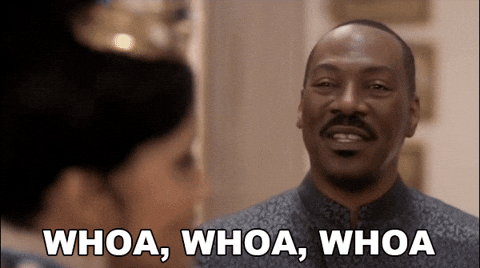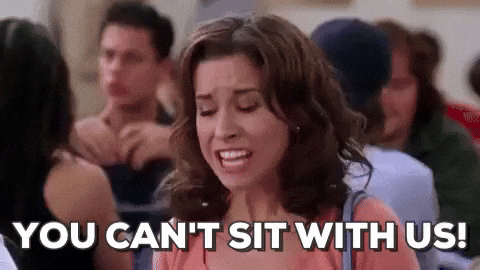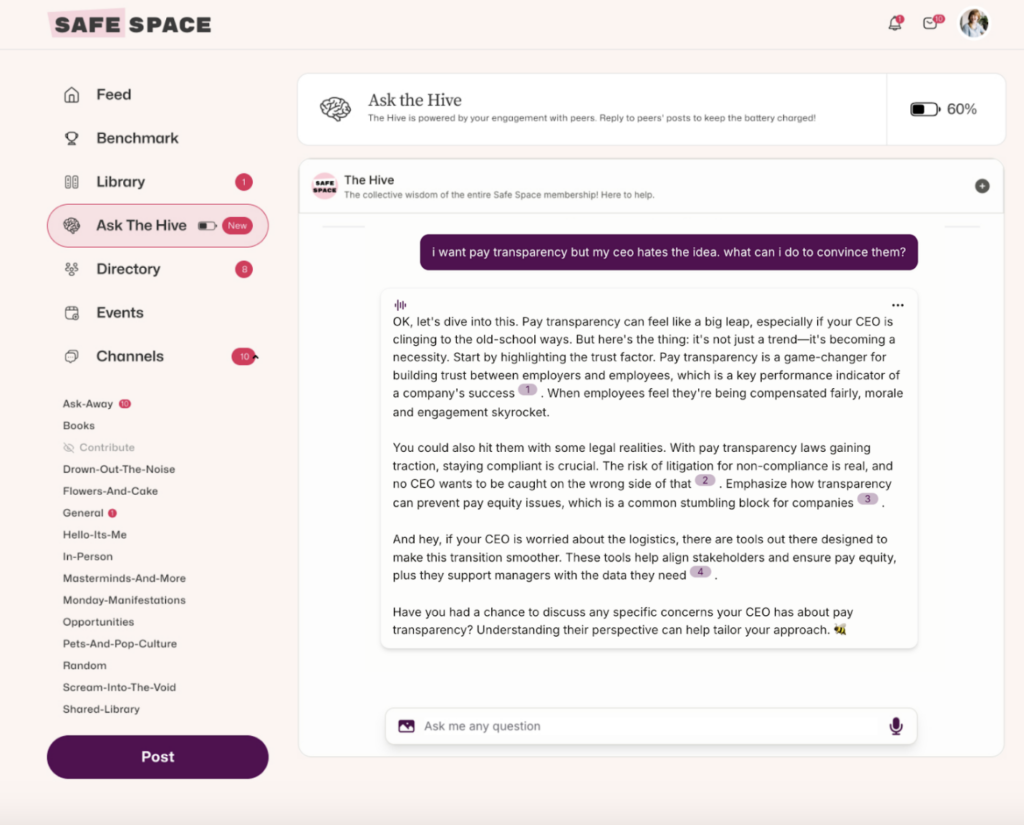🛑 stopping the BS

✍🏾 How do you professionally tell someone that their comment was racist or racially biased?
Context: We are a private, global company. Most of our locations and HQ are stateside, with a few sites in China and Mexico. We’ve been bringing leaders from Mexico to our mostly white, rural area, and some colleagues have made comments that don’t sit right with me. These people are much higher-ranked than me, so I don’t want to be unprofessional, but I still want to call them out on their BS.
📣 Lia Seth, Director of People @ Cylinder Health:
This is exactly the situation where I love to use the concept of “calling in.” I start by treating them like of COURSE they didn’t mean to be racist or hurtful, they just didn’t know any better, right? Even if they did intend harm, this tactic can disarm them by making them feel like they want to be on the side that’s logical and right, which is yours.
I’m a huge fan of some well-placed discomfort, but if there’s any chance these leaders don’t realize they’re doing anything wrong, it’s best to start with a conversation that allows you to hear each other out. Instead of saying, “you know, you REALLY shouldn’t say things like that” or “ugh, are we seriously still using that word? what year is it?”, try something like, “you may not have realized that word is racially biased and can be hurtful; I think what you meant to say is _____.” Another option that’s a little more pointed is “I don’t think you meant that the way it sounded.” It gives them a chance to learn and to try again.
You can make these comments in the moment if you think it will be received with openness, but you may want to have these conversations in private to help the person save face. Remember: your goal isn’t necessarily to make a point, it’s to make an ally.
📣 Tara Turk-Haynes, Founder/Consultant @ Equity Activations:
Well first, I love your advocacy for others. This is so necessary right now in workplaces because it will take all of us to create an environment of inclusion and belonging.
I think it’s important in workplaces to link awareness of other cultures and lived experiences to why this awareness is important as a company. Ideally this is somewhere in your mission or company core values. As businesses expand and grow, cultural awareness and language are important in order for any efforts to be successful. Imagine losing a deal or your job because you didn’t take the time to understand when your comments or actions could be considered offensive. Perhaps you had no idea you were being offensive but you also didn’t take time to educate yourself either.
I would suggest perhaps a program where your team learns more about others in the company and people you might do business with. I don’t know if you have an L&D department or even Biz Dev, but embedding awareness into business goals is key for understanding why this work is important. Perhaps you can propose this in a way and use some past instances you mentioned here (generally in a way where it’s presented as a business lesson) as examples of areas for growth for long term company growth.
📣 Felicia Jadczak, Co-CEO @ Inclusion Geeks:
This is a great example of using ‘calling in’ or ‘calling out’ techniques to address the comments, depending on the context. You know these colleagues best, so you’ll probably be able to make an educated guess on the intent behind the comments. If you think the person truly doesn’t understand the impact of what they are saying, then they may benefit from having you take them aside in a private conversation and offer them some feedback. This could sound like: ‘Hi there [colleague], I’m not sure if you realize this or not, but what you said about [other colleague] is pretty racist and that kind of language is not tolerated here. I’m sure you don’t mean this, so I want to make sure you know so you can correct this in the future.’ This saves the person a bit of public embarrassment and allows them the grace to hopefully learn from this interaction.
If the behavior is more egregious, you may want to take a ‘calling out’ approach. This could sound like: ‘I have to pause this meeting because what was just said by [colleague] is unacceptable and we need to address this before moving on.’ The calling out approach can be helpful to also serve as an educational moment for other coworkers in addition to reassuring folks that this kind of behavior will be checked and not allowed to continue.
Safe Space members can join this discussion here. Not a member yet? Apply to join here.

✍🏾 How do I attack a pervasive “mean girl” culture in the workplace? (Think multiple high-school cliques.) I have daily complaints from employees. It is absolute toxicity and I’m now having a hard time retaining talent and recruiting since this is a well-known issue in our company. Discipline doesn’t seem to be an option because it’s typically she said-she said with the only witnesses being part of the various cliques who obviously defend each other. Tried doing behavioral contracts and having individual convos to no avail. Managers are also at a loss as to how to deal with this. Every day I want to shout, “Just be a nice human!” It’s exhausting.
Context: HR Dept of One with 170 employees in a 24/7/365 healthcare operation. Cliques tend to be senior employees vs new employees, first shift vs second shift employees, friend group vs other friend group, etc.
JOIN 150K+ HR LEADERS
Get insights, learnings, and advice on how to build companies and cultures that people actually love.
No spam. Unsubscribe any time.
📣 Samantha Bivenour, Senior Manager, People & Culture @ X Games:
Oof, I’ve been there – and I feel the weight of being a department of one trying to hold it all together. One thing that’s helped in our org (a growing company with deep legacy dynamics) was partnering with a respected, no-BS leader outside of HR to co-lead some of the cultural reset. Someone who saw the same issues I did and wasn’t afraid to address it directly in leadership meetings. Having that cross-functional support helped get buy-in from managers and added real credibility to the message that this isn’t just an “HR problem” – it’s a company culture problem.
We also started shifting the convo away from “discipline” and toward shared accountability, values-based expectations, and manager enablement. That meant offering managers real tools (like how to call in toxic behavior even when it’s subtle or coming from top performers) and making clear that it’s their responsibility to lead a cohesive team. Eventually, we made it part of their performance expectations, too.
It’s been slow progress, but anchoring everything in “we deserve to work somewhere we feel safe and respected” helped keep it human. I’d also say: don’t underestimate the power of visible storytelling. Celebrate the teams not engaging in this mess. Shine a light on what good looks like, and you might start to shift the norm.
You’ve got this! One small courageous step at a time.
📣 Sarah Aziz, Director of DEAI Initiatives @ Pittsburgh Cultural Trust:
Samantha: We’re synced! I came to suggest a values reset for the whole company and not just the problem people. Set the expectations for behavior across the board and have the values reflected in performance reviews. We shifted to total merit based comp increases so when people aren’t getting annual bumps because they’re not meeting performance standards sometimes that’s motivating.
An outside consultant to help develop the values is a great suggestion too. We found folks to be more open in listening sessions led by outside leaders vs internal ones.
Are there any people who aren’t part of the toxic culture you could reward? That might also help.
It’s never easy and often frustrating but hopefully knowing you’re not alone helps! Good luck 🍀
📣 Eliana Gall, Director of People and Culture:
Are your managers part of this clique behavior? Are they actively contributing to the problem? If they are, you need to start there. Look at how far up in the organization the behavior stretches and find a leadership partner above that level in the direct chain of command (if it goes all the way to the CEO, you’re wasting your time).
Do the values reset with your managers first. Take the time and do as much work as you need to so that the vast majority of your managers are fully on board – they recognize the problem, are clear on the behavioral changes you need, know how to manage for the desired behavior, and are willing to do that active management. Make values-based behavior of teams a performance expectation of your managers. Then, do your values reset with everyone. Support your managers in holding their staff accountable while you and your leadership partner focus on holding the managers accountable.
Safe Space members can join this discussion here. Not a member yet? Apply to join here.


